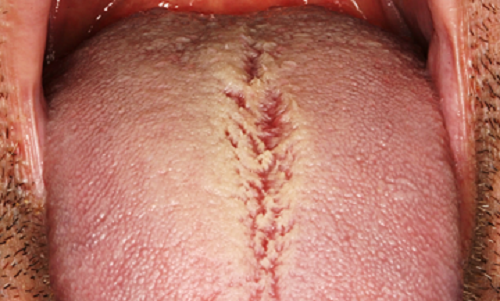Hairy tongue
Hairy tongue occurs when excessively long and hyperkeratinised filiform papillae of the tongue become stained by an accumulation of epithelial cells, exogenous material or chromogenic microorganisms (see Hairy tongue). It is usually black, but may be other colours and can occur with the use of chlorhexidine mouthwash, after a course of antibiotics or in patients who have limited oral intake (eg with percutaneous endoscopic gastrostomy [PEG] feeding).
If any 'red flag' features of oral mucosal disease are present, refer to an appropriate specialist.
Management of hairy tongue primarily involves identifying and addressing the cause. Other strategies include improving oral hygiene, brushing the tongue gently with a toothbrush and using sodium bicarbonate mouthwash1.

